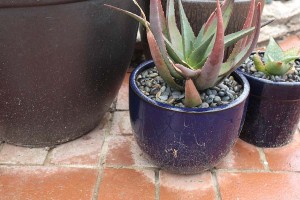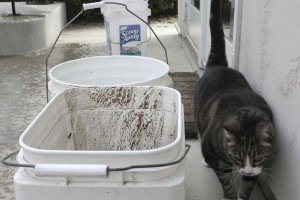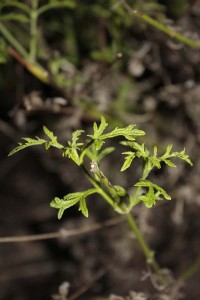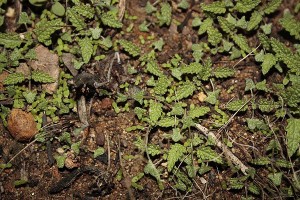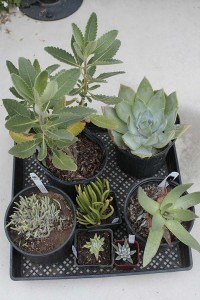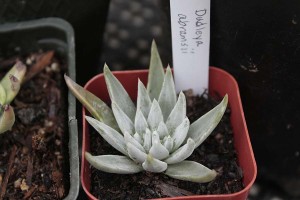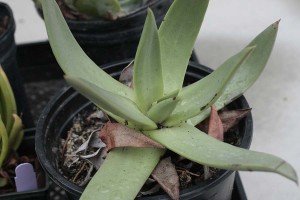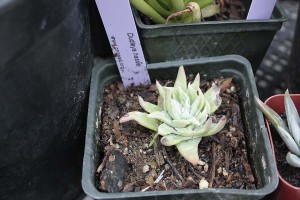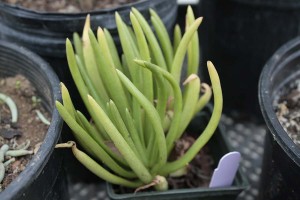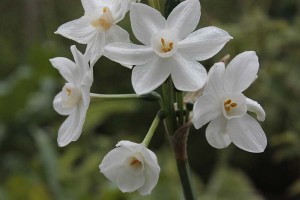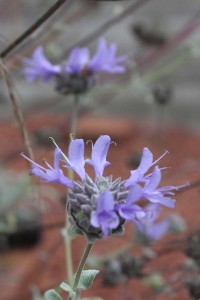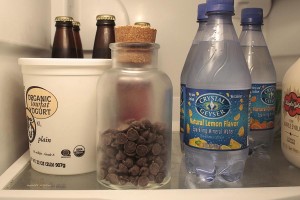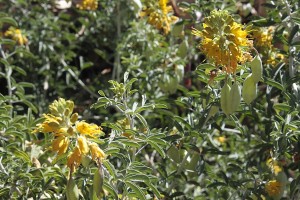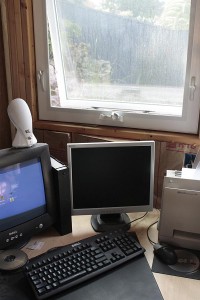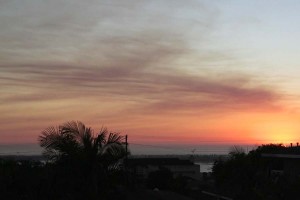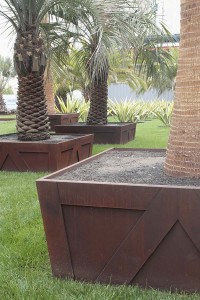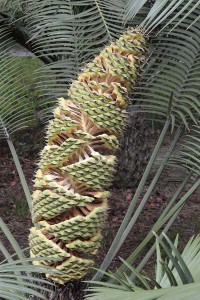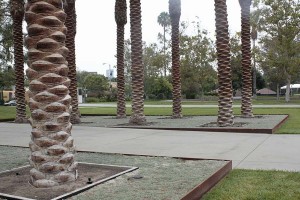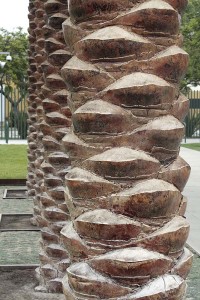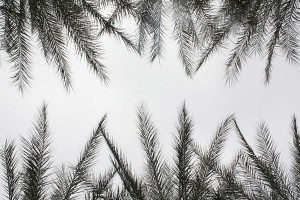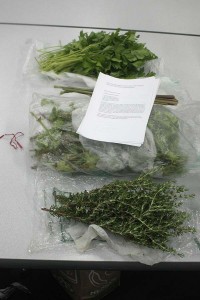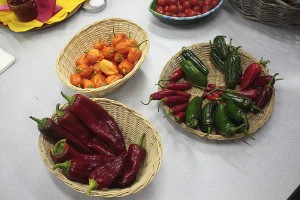Someone has declared tomorrow, October 9, 2010 as International Tulip Guerrilla Gardening Day. [ Here’s the Facebook event. ] I won’t be discussing tulips, but this post does have a few things to say about guerrilla gardening.
The local native plant listserv lit up a few weeks ago over a story in the local paper about seed bombs that ran on August 30.
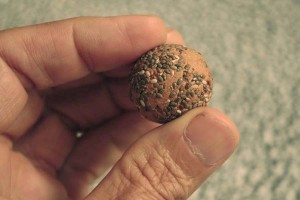
If you’re not up on seed bombs here’s a little background: The idea of rolling up seeds and clay to make little balls that could be lobbed into an area to sow the seeds probably goes back centuries. But the technique was revitalized in Japan by Masanobu Fukuoka during the last century as part of a low-disturbance style of planting. Instead of tilling the ground, these lumps of seed and clay could be spread out on the earth’s surface, reducing ground disturbance and the resulting need to weed so intensely. Up to that point the little round seed delivery devices were known as seed balls, earth balls or even clay dumplings.
With the rise of the militant guerrilla gardening movement, the little seed ball became one of the weapons of choice against what was perceived as urban blight. An untended vacant lot could be showered with with these little projectiles, and a few good rains could see the seeds sprouting and taking over what might have been invasive weeds. In the testosterone-soaked guerrilla garden movement the friendly seed ball quickly became rebranded a “seed bomb.”
Now we return to current times and the article I started out mentioning: The original cut of the article touted how these particular seed bombs contained native species, including–cue the scary music–sweet alyssum! 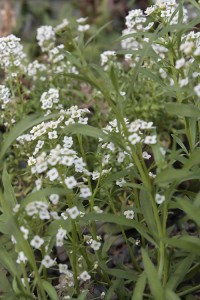 While the definitely-not-native sweet alyssum isn’t one of the top two or three most invasive plants, it’s undisputedly a problem and has no business in a seed ball that could get hurled into an wild area by a well-meaning guerrilla gardener. In my own garden, a sowing of the stuff twenty years ago has led to a situation of seedlings still popping up every time it rains.
While the definitely-not-native sweet alyssum isn’t one of the top two or three most invasive plants, it’s undisputedly a problem and has no business in a seed ball that could get hurled into an wild area by a well-meaning guerrilla gardener. In my own garden, a sowing of the stuff twenty years ago has led to a situation of seedlings still popping up every time it rains.
The article generated all sorts of comments, and several people wrote directly to the maker of these particular seed bombs mentioned in the paper, Jim Mumford of GreenScaped Buildings. One thing led to another and it was revealed that the newspaper got hold of a bad list of ingredients, and that sweet alyssum had never been a part of the mix. The newspaper ran a sidebar correction to the story. (The species used to me looks like the California native wildflower mix offered by S&S Seeds.)
Still by that point the damage had been done, and the creator of these particular balls felt like he needed to show up last month at the lion’s den of the the native plant society meeting to do some damage control. He brought us all a big bag of free seed balls. He ran down the real list of species that were really in the mix. He reiterated that sweet alyssum had never been part of the mix.
When it was all over, several in the audience were saying they had no trouble with the species used to make the seed balls. The plants were all from California and weren’t considered invasive. But this was a tough crowd to please and there were still a few lingering concerns.
Within the state there are distinct forms of many of the plants in the mix, and each region’s flora has a particular balance of local plants. If you bring in a non-local strain of a “native” plant you might do something to mess up that balance. Really the only way to make a safe seed bomb that you might lob into a wild area would be to use seed from local plants. Seed bombs are fun, but keep them confined to urban gardens away from wildlands and don’t go tossing the balls into your neighborhood canyon thinking you’re doing the earth a favor.
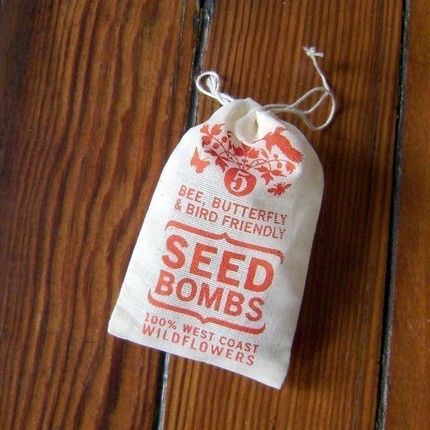
The story of the San Diego seed bombs has a relatively happy ending. But over the last couple of months I’ve run across a seller who offers “West Coast seed bombs” on Etsy and through a number of boutiques. The vendor lists the ingredients as “Cornflower, Siberian Wallflower, Garland Chrysanthemum, Shasta Daisy, Farewell-to-Spring, Plains Coreopsis, Sulphur Cosmos, Wild Cosmos, African Daisy, Sweet William, California Poppy, Blanket Flower, Baby’s Breath, Tidy Tips, Mountain Phlox, Blue Flax, Sweet Alyssum, Annual Lupine, Lemon Mint, Red Poppy, Rocky Mountain Penstemon, Desert Bluebell, Mexican Hat, Gloriosa Daisy, None-so-Pretty, Prairie Coneflower, and Black-eyed Susan.” Not only does this mix include sweet alyssum, it contains garland chrysanthemum, one of our local scourges. Some parts of the country also have problems with the baby’s breath.
The issue of invasives aside, it makes me wonder about people’s definitions of what constitutes a wildflower. Siberian wallflower on the West Coast? African daisy?
I got in touch with the makers of these seed bombs, and they were quite responsive, saying “we are continually developing this product. Your feedback will help inform our product going forward and is much appreciated. We will gladly include information about the danger of invasive species in our product from here forward.” And they asked for suggestions for plants that would be better citizens in a West Coast wildflower mix. Off the top of my head I referred them to the list accompanying the article, and added just a few ideas of California natives not on the list: baby blue eyes, fivespot, coast sunflower, desert marigold. What others would you recommend?
If the makers of these seed balls drastically change their mix we could have another relatively happy ending. Most of us probably have non-native plants in our gardens. If what happens in the garden stays in the garden, then it’s not quite a doom and gloom scenario. But we definitely have a problem if people start throwing seed bombs into the wilds.
In this case, accompanying the seed balls with a note about the potential threat of invasive plants could do as much good as reformulating the mix.


